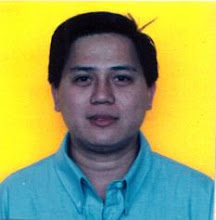Of all the teaching methods used in writing, writing and keeping the students to write is still the best. The greatest masters of Arts had affirmed this claim. One time American novelist Mc Leish is invited to talk before the creative writing students. As part of his introduction he asks, "who wants to be a writer?" Everyone raises his hand. "If that’s the case," the novelist continues. "Why aren’t you at home writing?" It is writing that makes a writer and nothing else.
In T.I.P. we have three subjects in writing; English 123 - composition, English 313 - technical writing and English 113 grammar with writing as one of its component parts.
But the writing being referred here is the scientific and not the creative one. There is a far-flung difference between creative and scientific writings.
Creative writing aims to stir up emotion. Its products are novels, short stories, poems, plays and essays. Scientific writing aims to equip the students with the basic skills in writing researches, letters and other forms of written communications.
But in teaching these two areas of writing, both have one thing in common. Students must pull out their pen, sit down and write.
Convinced of this principle, I tried to bring it to the classroom. But how? I don’t know. I lambasted all books in many libraries, but found no idea on how to keep the students to write. We can not simply write a title on the board and the students do the composition which is exactly what they call sit-work, the students work, the teacher sits.
Writing class follows a certain process. This process includes; pre-writing, actual writing and post-writing which, is the checking of grammar. Pre-writing refers to some motivations that would bring the students to a writing mood.
In my class, while I am checking the attendance, students write anything they want to write. Anything here refers to all possible topics under the sun from toothpick to battleship. I clarified to the students that fluidity of ideas while writing should not be spoiled by the thought on grammar. Grammar is technical. It can be checked later.
This is the culture we are trying to observe in our English classes. I can not say that this is the best or the worst, correct or incorrect. I am convinced on the lecture of the contemporary American educator Harry Wong that culture is neither good, nor bad. It simply exists. We have a writing culture. After all our aspiration is to produce students who can not simply write but can write well, and it is writing that makes a writer.
This daily one-fourth sheet of paper is called Anything Goes. From this piece of paper I discovered the students’ sentiments and disillusions. Here are two samples of it.
June 20, 2004
Now I am looking at this one- fourth sheet of paper. Our professor tells us to write anything. But what to write? I don’t know. I have no idea. Well, I’m happy today because when I entered the school I saw my crush.
That’s all sir good morning. Ah Yes! While I walked at Recto as usual I saw people sleeping by the road.
July 21, 2004
I’m mad to myself because I failed in this subject. What am I going to do now? I am imagining what kind of face should I face to my father. I shy to myself. Hu Hu Hu .
In the creative writing classes journal writing is also suggested. This is not simply to record what we thought of. This technique sharpens the craft of a writer.
Writing a journal is a daily activity at home. Everyday it is checked in school so that student will find significance in it.
In writing not only a thought is expressed. Pain and other feelings that need an outlet can let go. At least in a small piece of paper, students have a chance to sharpen their writing skill, and from which they have found a simple relief from the boring world of everyday. After all it is only writing that makes a writer.
Subscribe to:
Post Comments (Atom)

No comments:
Post a Comment